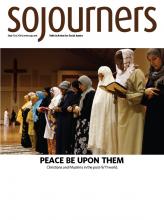I have attended the same seminary graduation every year for three decades, and every year the same thing happens: After the graduating students are in their places, the faculty enters. There is a roar of applause and acclaim from the soon-to-be graduates. It goes on for several minutes, often until the president, whose entrance has gone unnoticed, urges everyone to be quiet and sit down.
This spontaneous ovation signals a fact of seminary life: For students, the faculty is the school. The designated leaders -- the president and senior administrators -- are, in most cases, part of the barely noticed backdrop against which the drama of teaching, learning, and leadership development is played out. There are exceptions, of course. In seminaries that stand in liturgical traditions, the president might preside at worship on a regular basis, and the model of community life owes something to a monastic chapter with a prominent dean. And a small number of presidents are so widely known outside the school, as speakers and writers, that they have major impact on their schools' students as well as a broad public.
In research conducted by Auburn Center for the Study of Theological Education, however, presidents and other senior leaders are rarely mentioned when students are interviewed about the features of seminary life that shape them and set their vocational direction. Their models for leadership are faculty members, pastors in field settings, and well-known figures in their denomination or religious circle.
Read the Full Article

